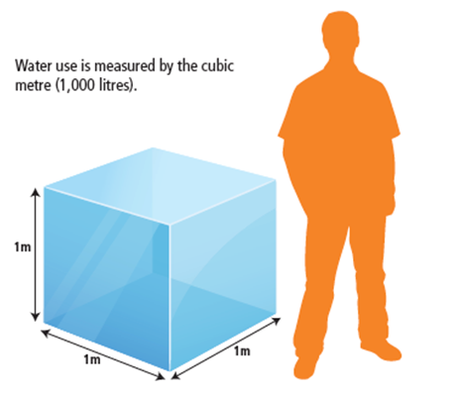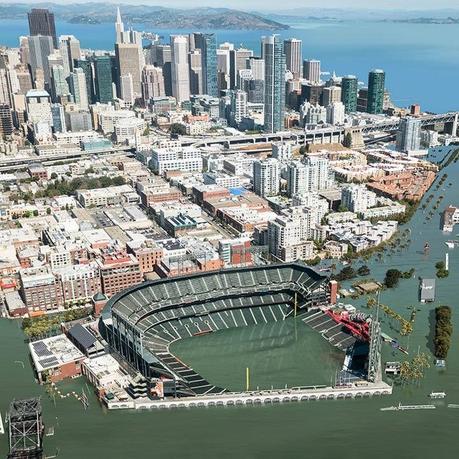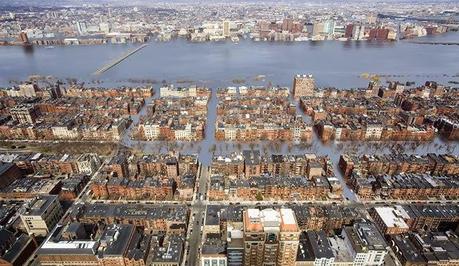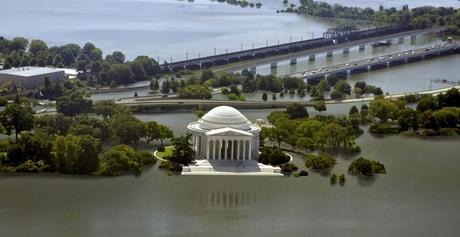Northeast Greenland ice was considered stable until 2003, when summer temperatures spiked. Within a few years, the main outlet glacier draining the region -- Zachariae Isstrom -- retreated about 20 kilometers, and regional ice mass loss jumped from zero to roughly 10 metric gigatons a year. Today, ice mass loss from northeast Greenland into the Fram Strait abutting the Arctic Ocean is now closer to 15 to 20 metric gigatons a year and is still increasing.

A cubic meter of water weighs one metric ton (2,200 lbs). "Giga" is the prefix for billion.
We also learned recently that the West Antarctic Ice Sheet is collapsing and its disintegration is unstoppable. Combined with what we've discovered about the Greenland Ice Sheet, the estimates of sea level rise in the latest (5th) Intergovernmental Panel on Climate Change (IPCC) report -- between one and three feet this century -- appear extremely conservative.If we don't reduce CO2 emissions immediately to near zero -- that's right, ZERO -- sea level rise between now and say 2200 could result in this (visualizations by Nickolay Lamm. Data: Climate Central).

AT&T Park, San Francisco

Back Bay, Boston
or this
Jefferson Memorial
So, how are we addressing the devastating impact of anthropogenic global warming (AGW) on the Greenland Ice Sheet? The government of Greenland has opened up oil exploration in the Greenland Sea, and already awarded leases to a conglomeration of companies from around the world. When questioned about the decision by environmental organizations concerned with AGW, Greenland officials, who are already planning on how to dole out the proceeds from the leases, stated, "Greenland is not a museum."For more on the opening up of Greenland to exploration/exploitation, see: The Grab for Greenland, by Phillip Stephens.

